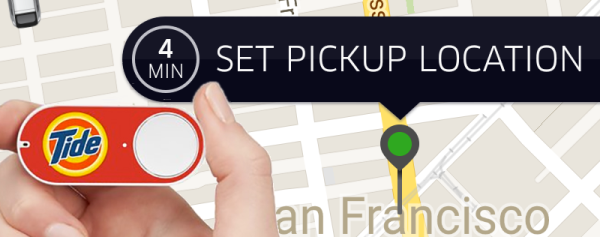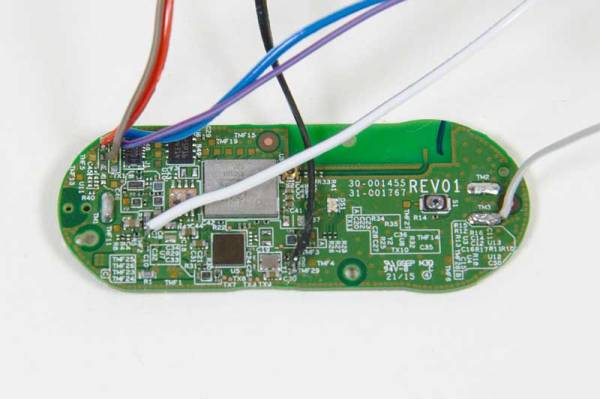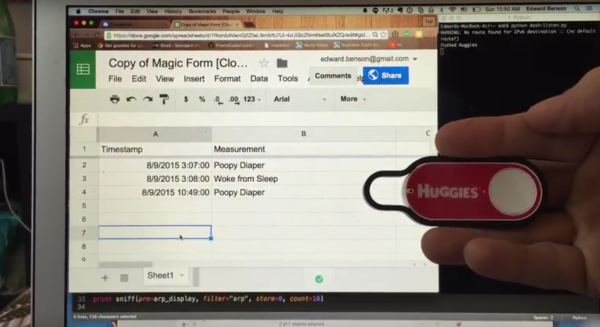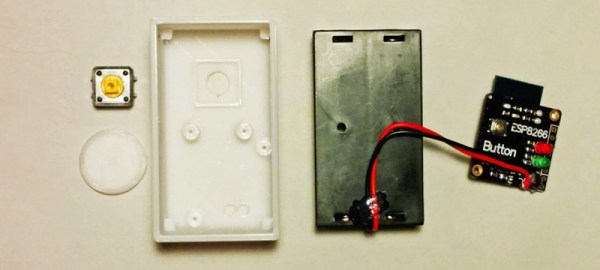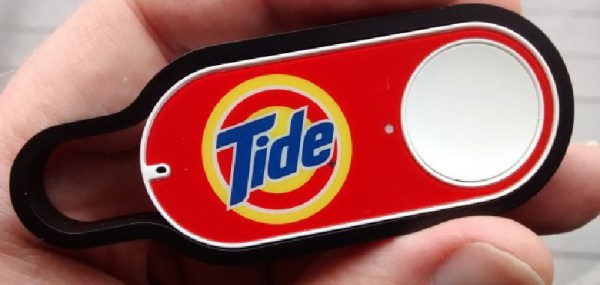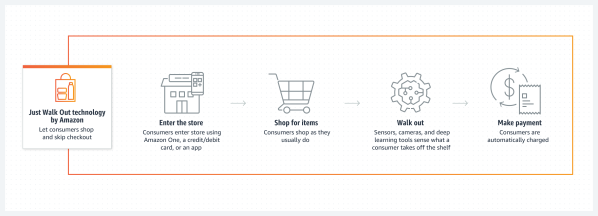We’ve seen some interesting hacks of the Amazon Dash buttons, a neat device where you press a button and it orders a product from Amazon for you. Now, [Amazon] themselves are getting into the hacking fun with the AWS IoT Button. This is a Dash button that Amazon is giving out at events to promote their new Amazon Web Services (AWS) Internet of Things (IoT) service.
As part of their efforts to take over the world, the AWS IoT service allows you to create button-based services like ordering pizza or starting Netflix, but without running your own server. Instead, Amazon handles all of the hard stuff behind the scenes on their Lambda engine, which receives the small bit of JSON that the button sends and runs a Lambda function that orders pizza, kicks off Netflix, then starts World War III. Amazon provides sample actions for things like launching the missiles sending a text message over Twilio and writing to a database. Amazon isn’t selling these buttons: they only seem to be available as swag at events. Make a loud enough noise in the comments section and maybe they’ll allocate some for the Hackaday community.
Continue reading “Amazon Giving Out (Sort Of) Hackable Amazon Dash Button”


